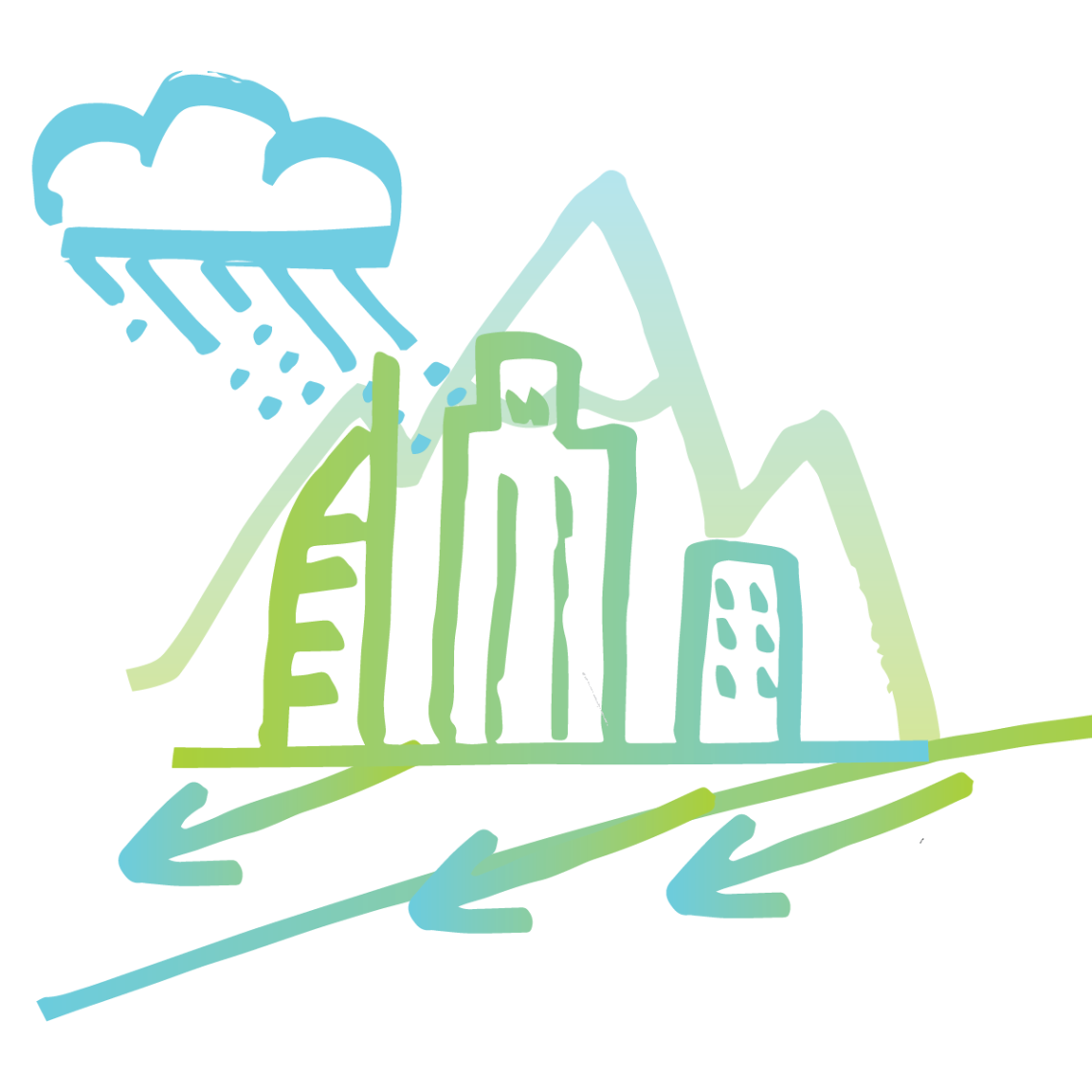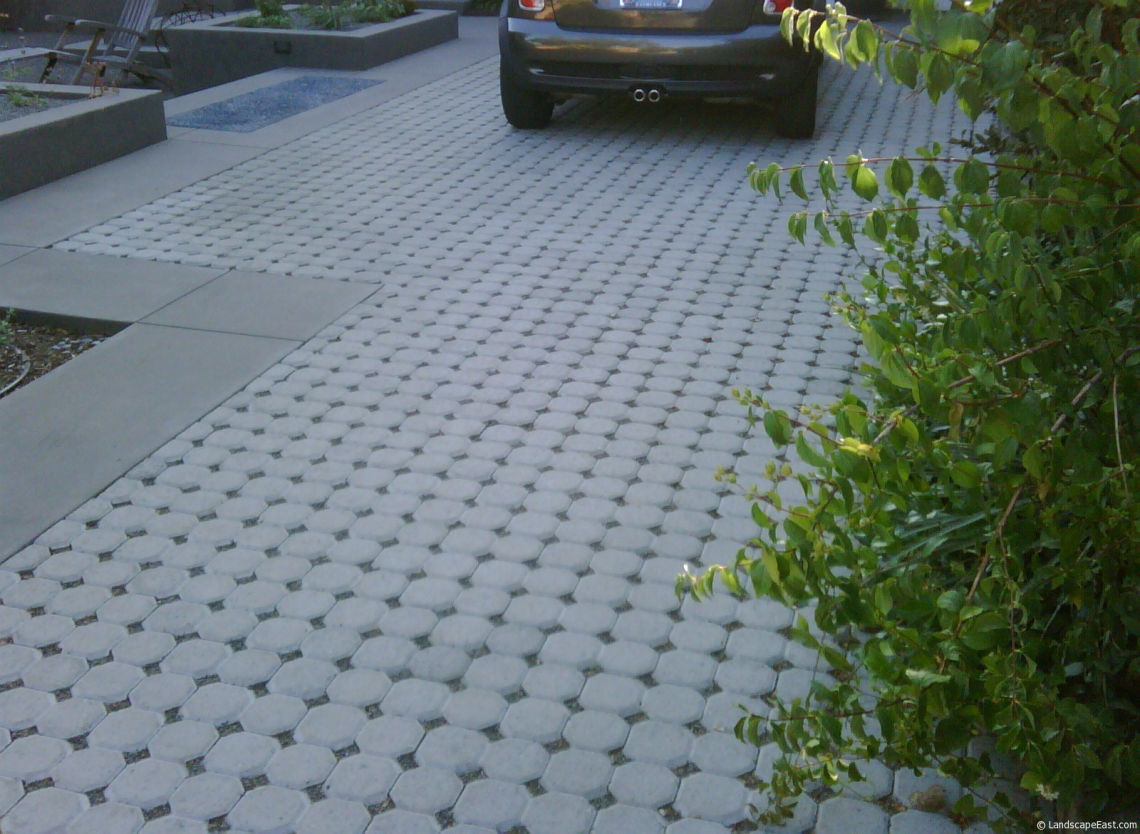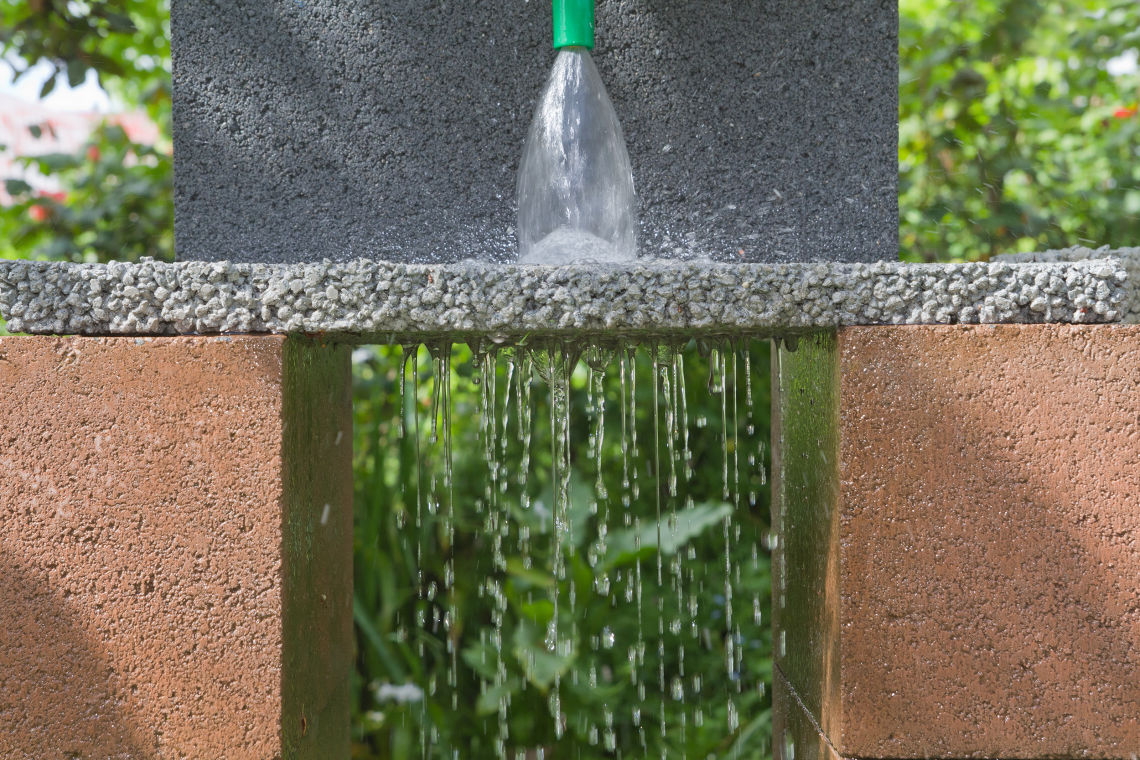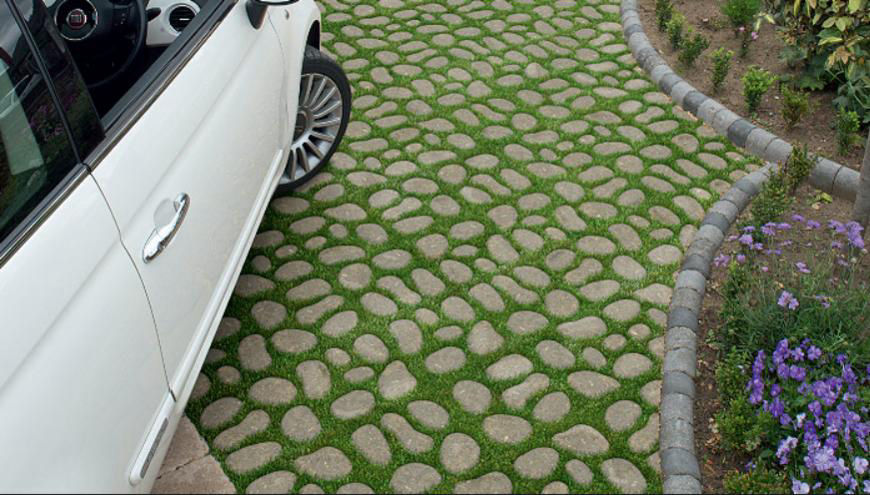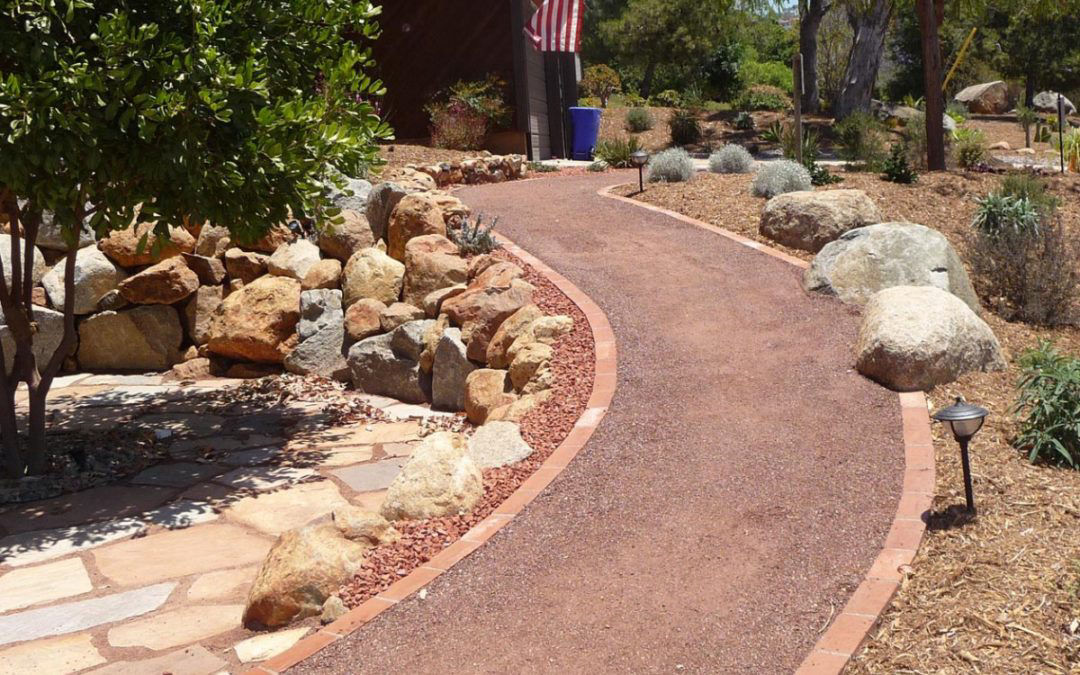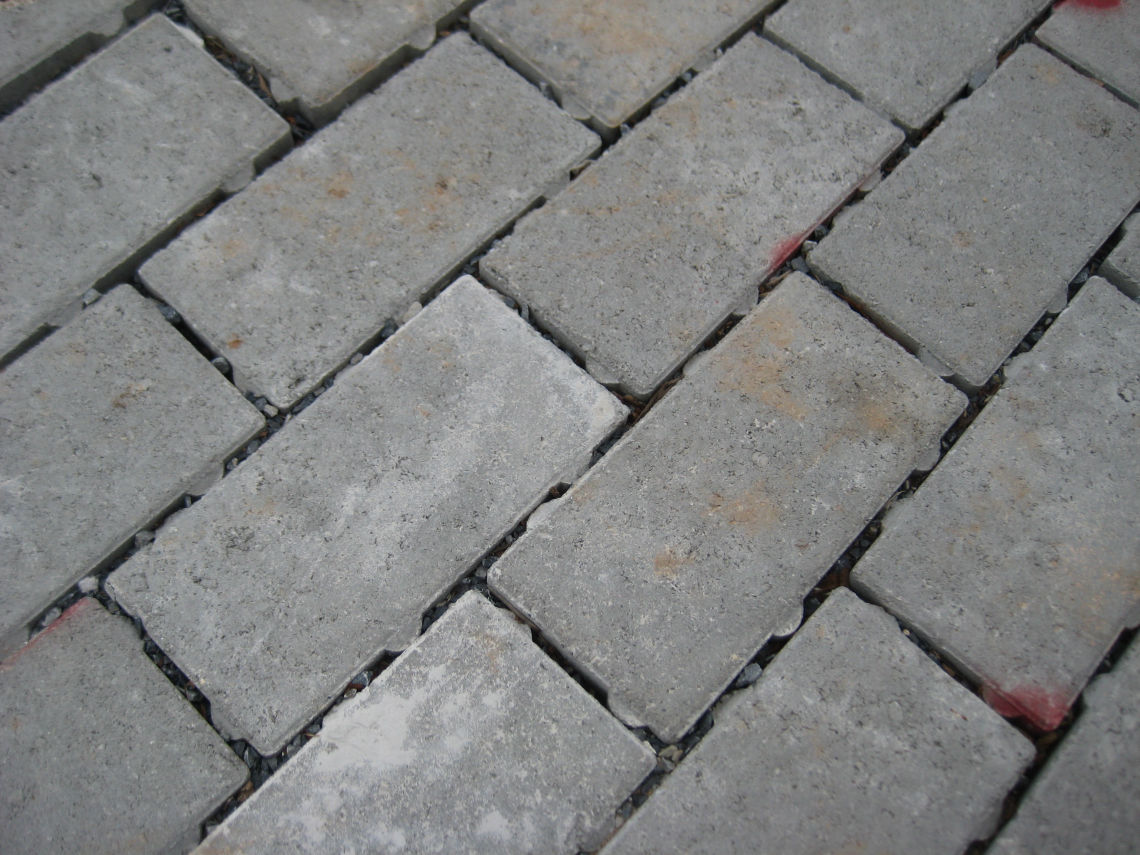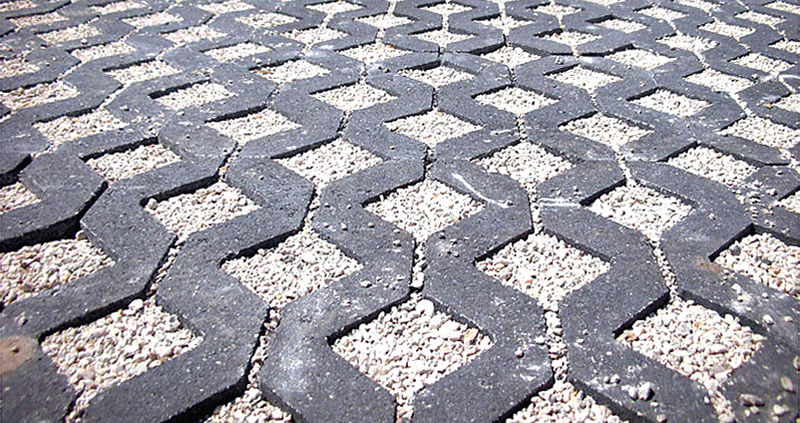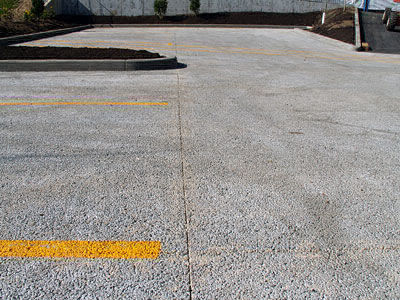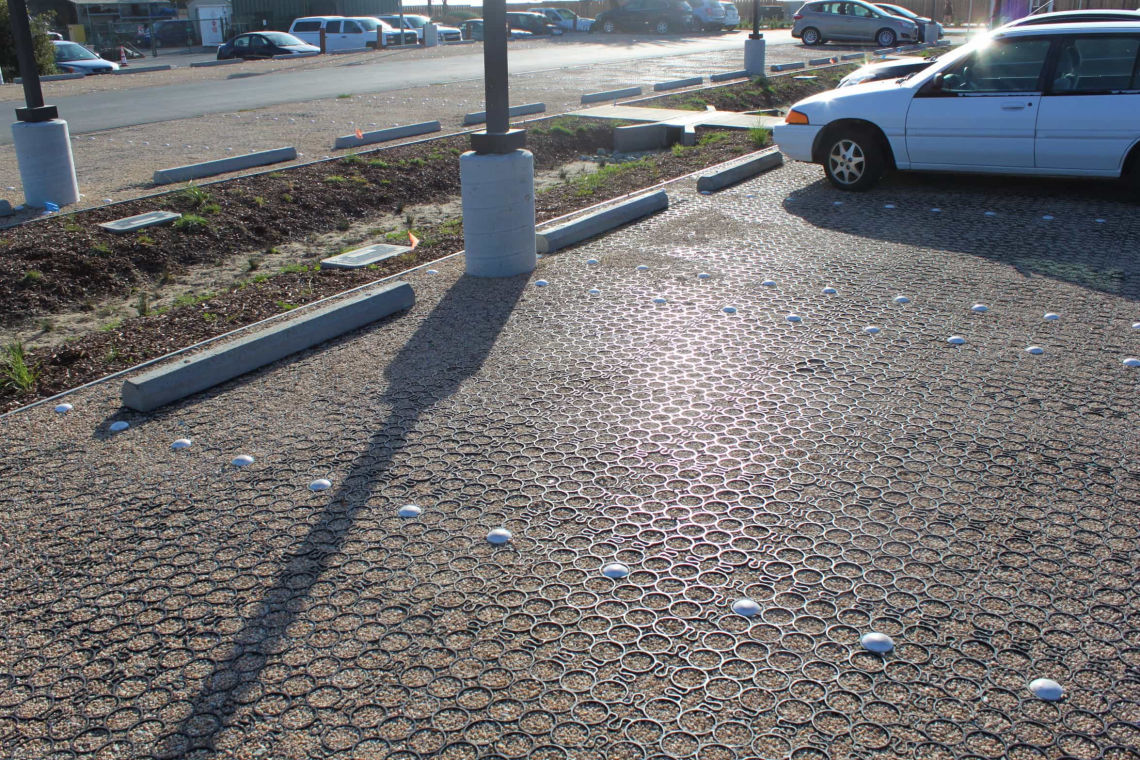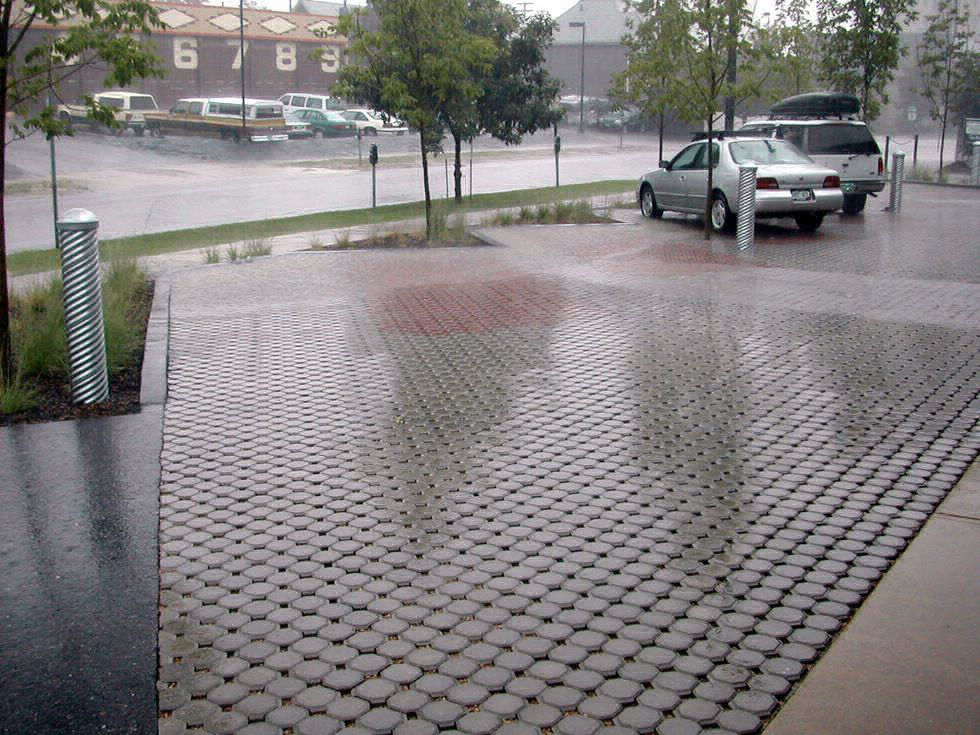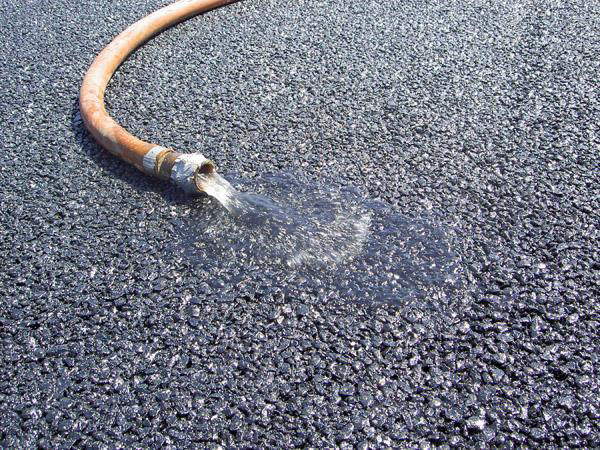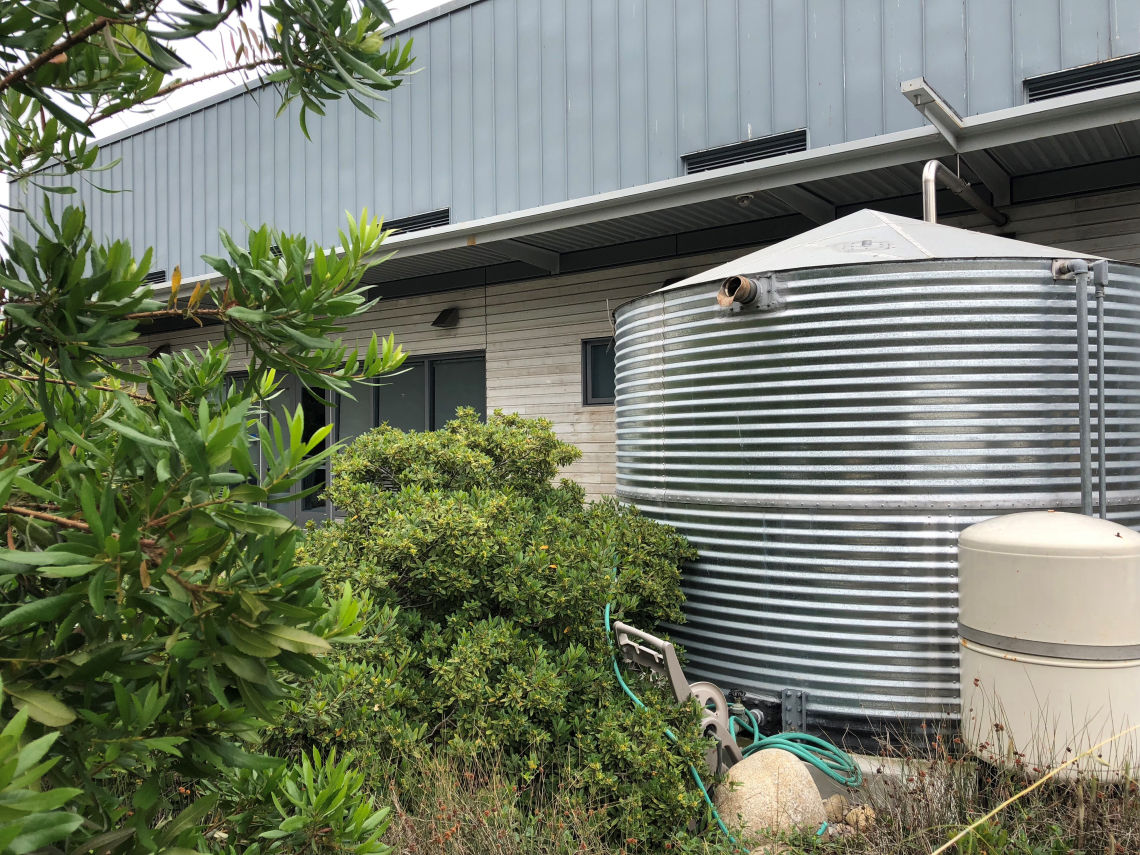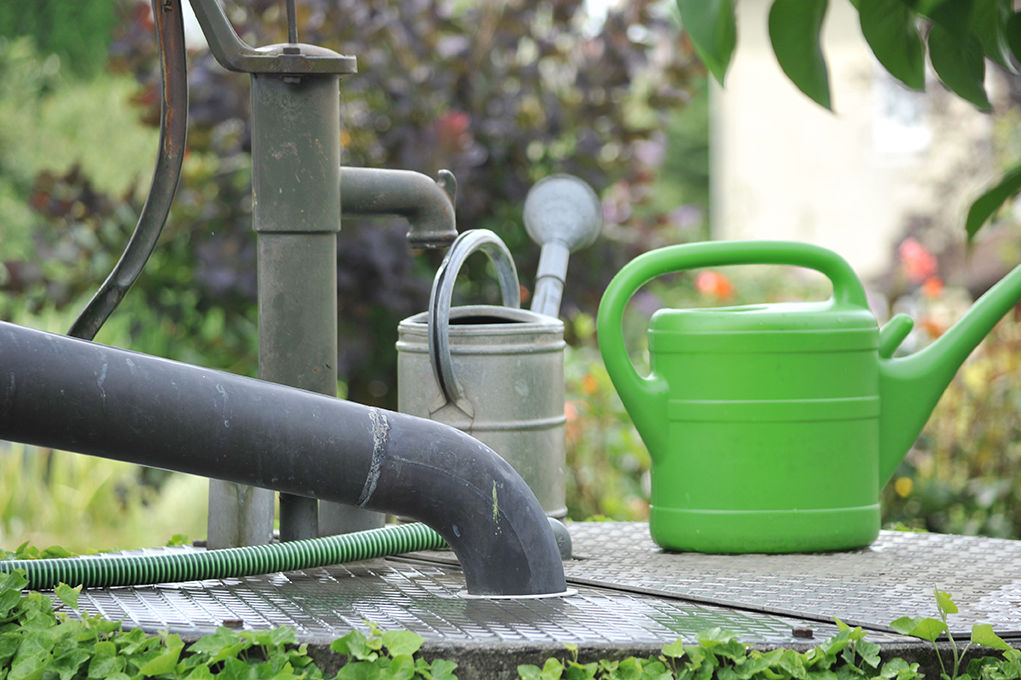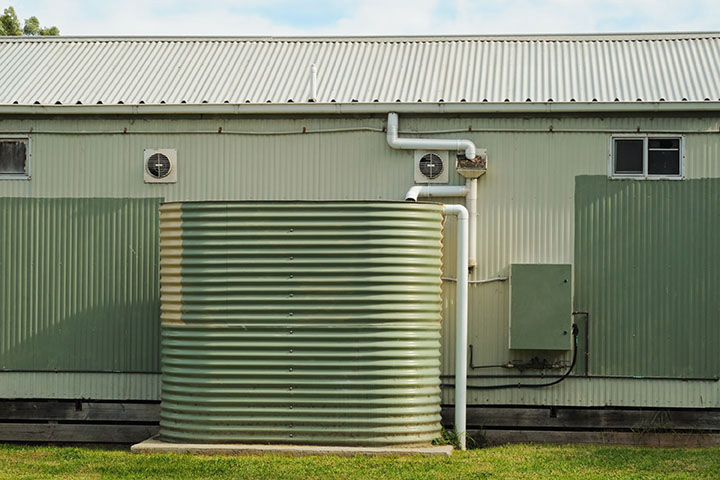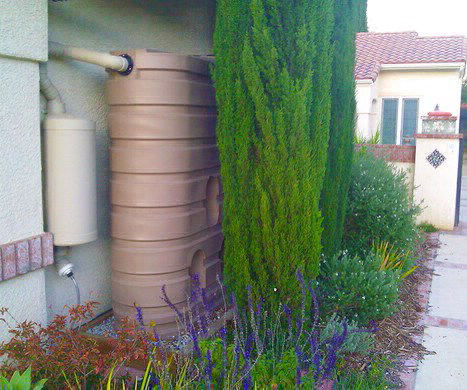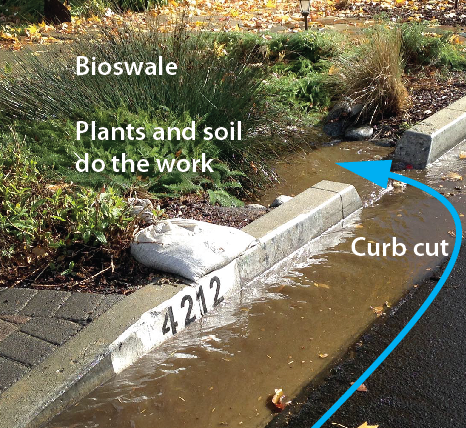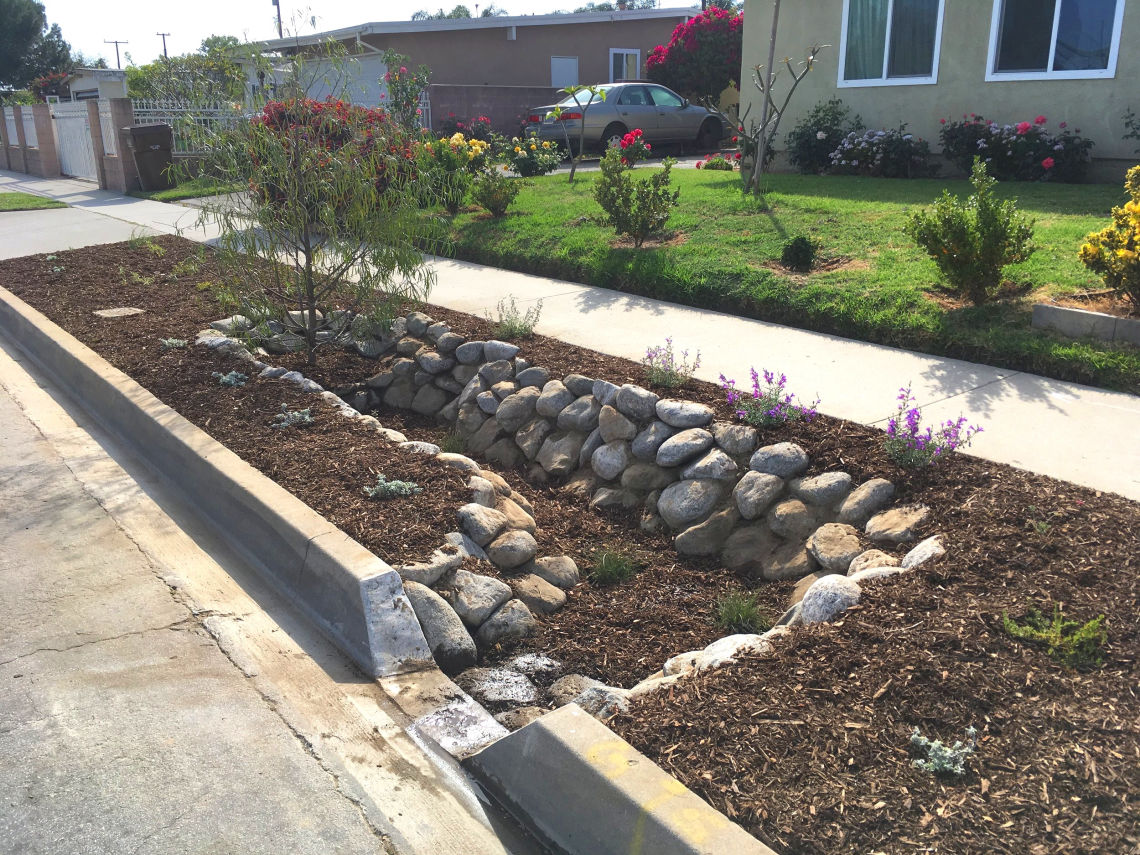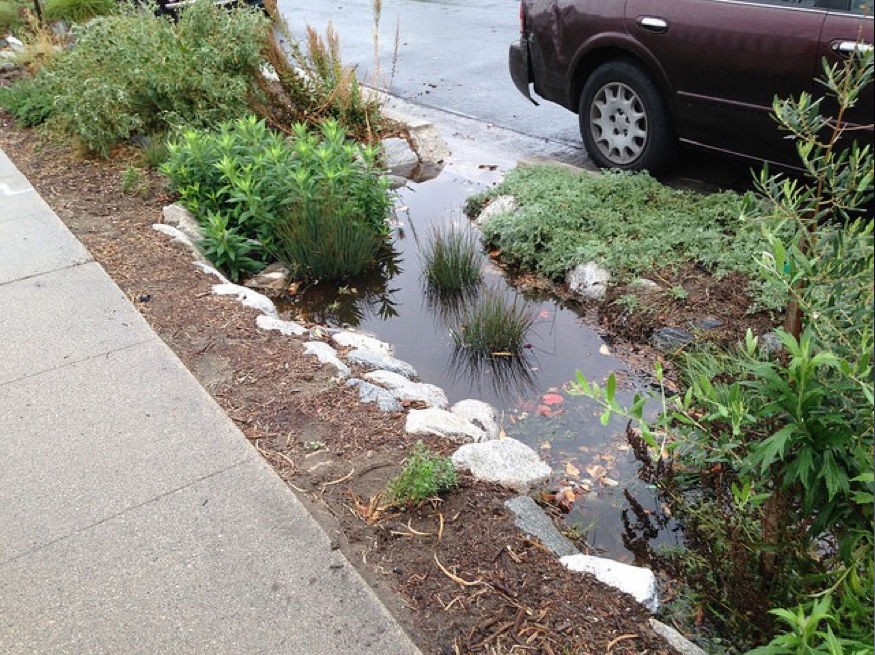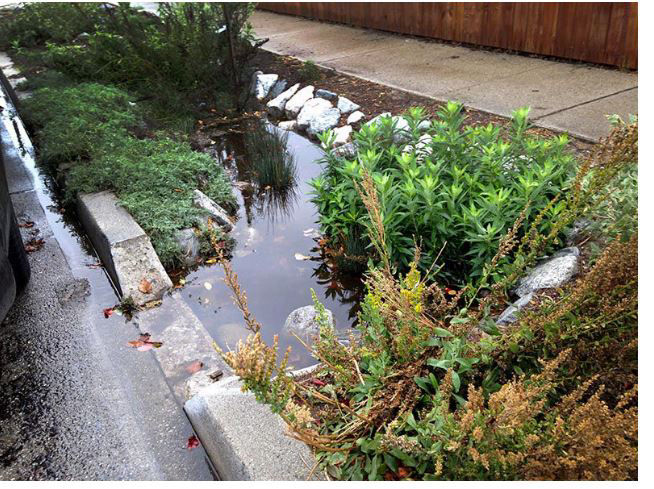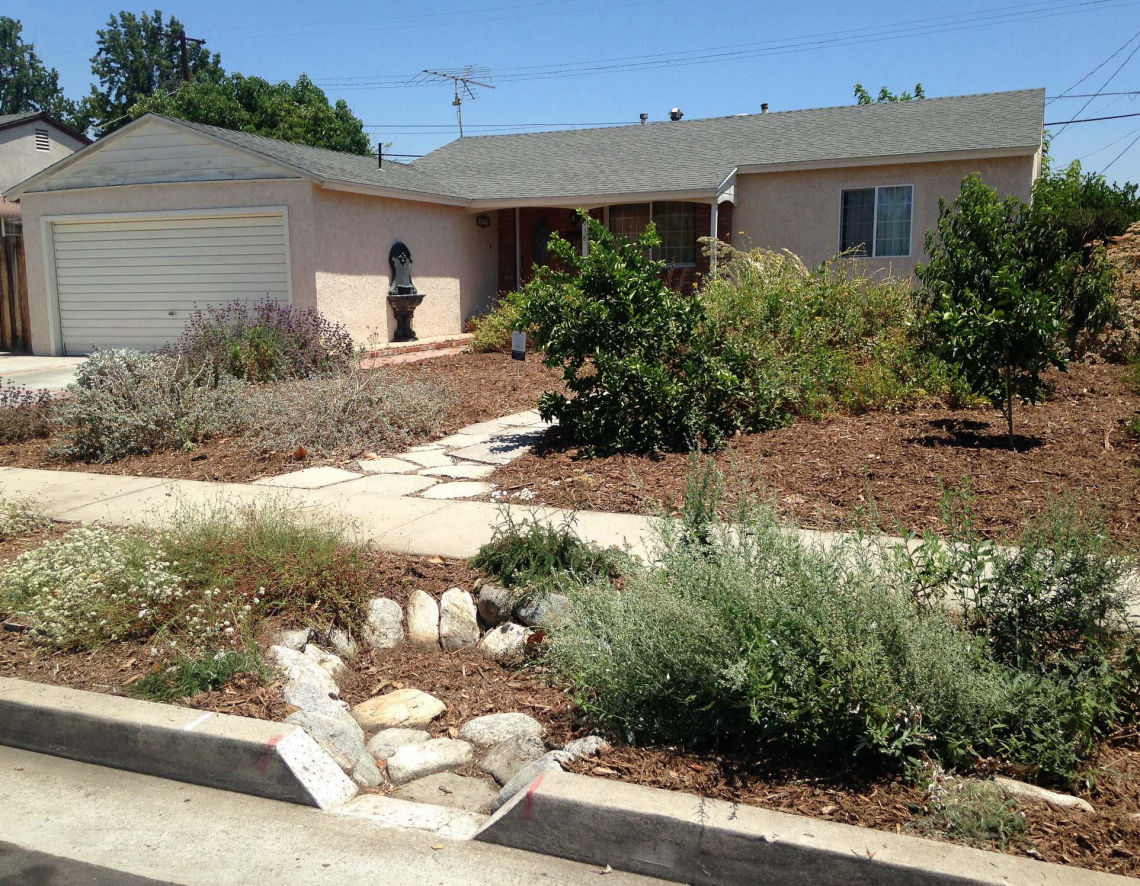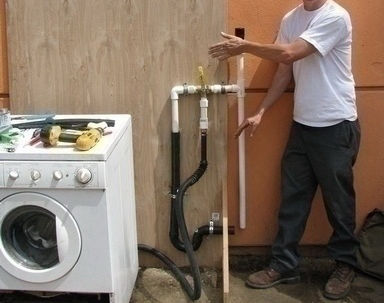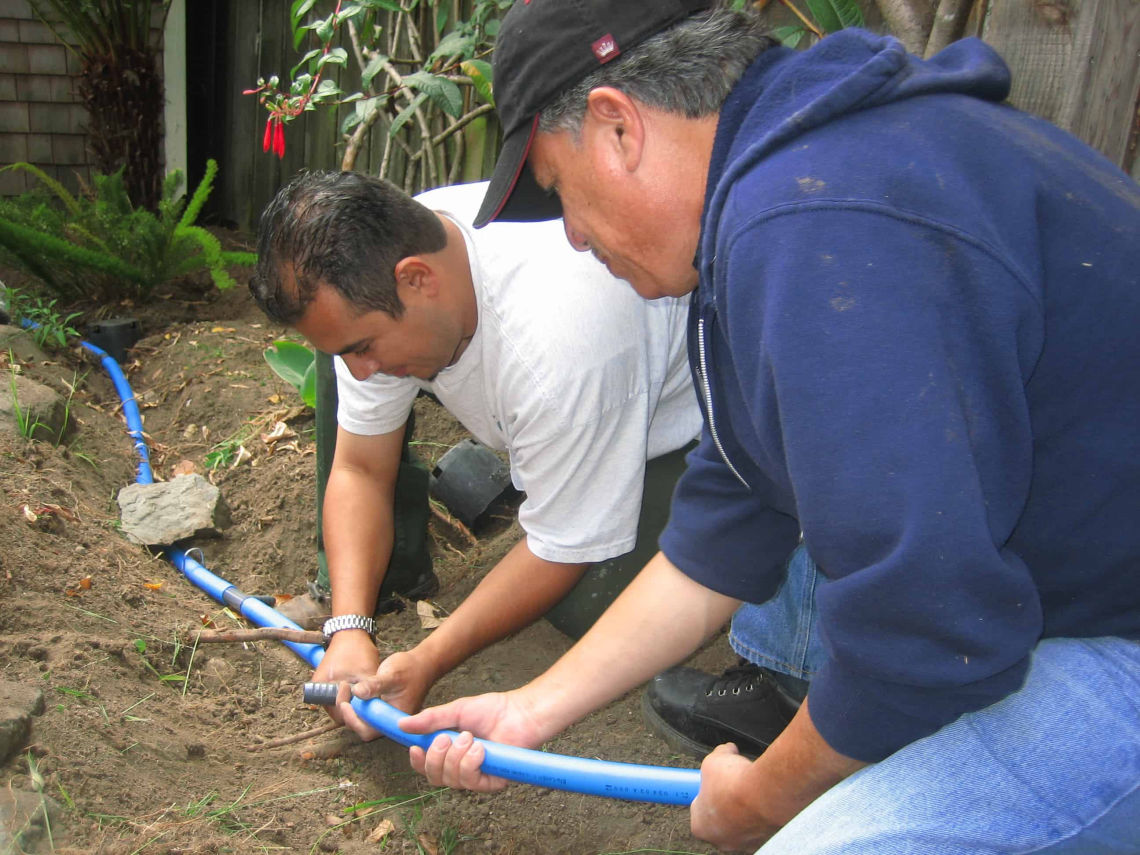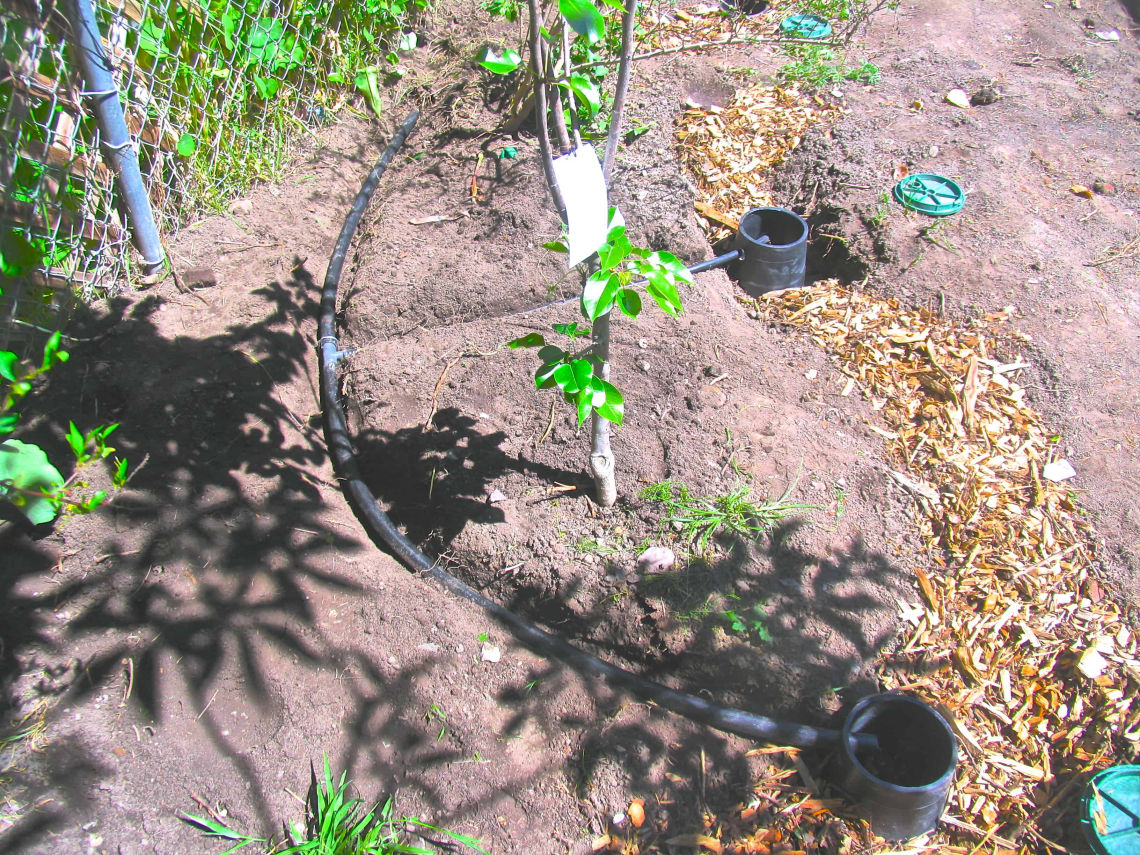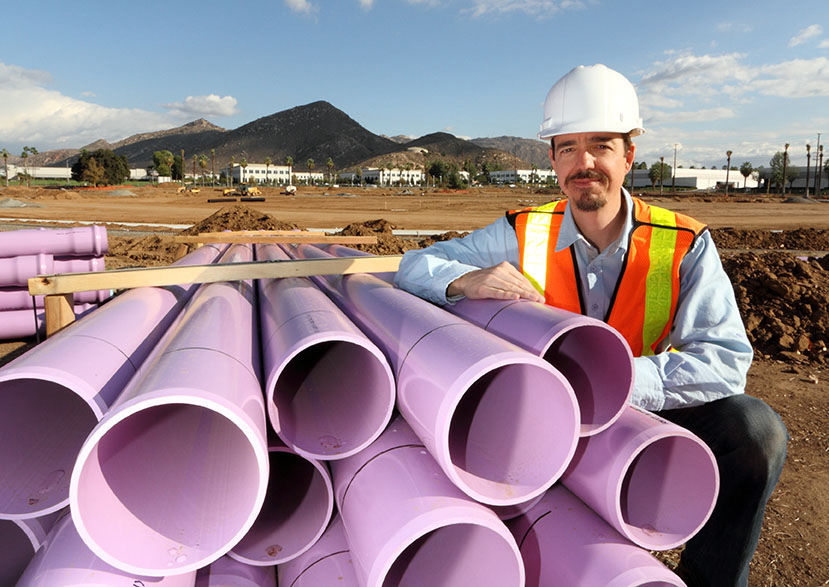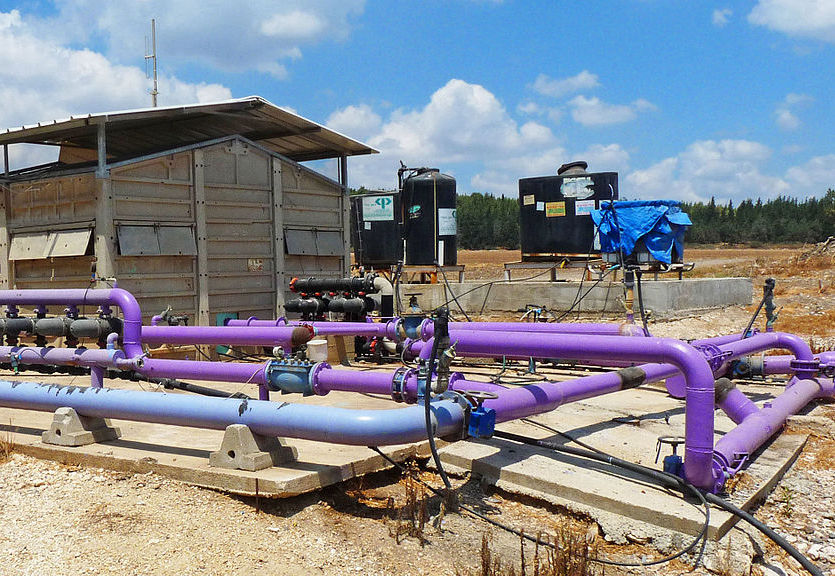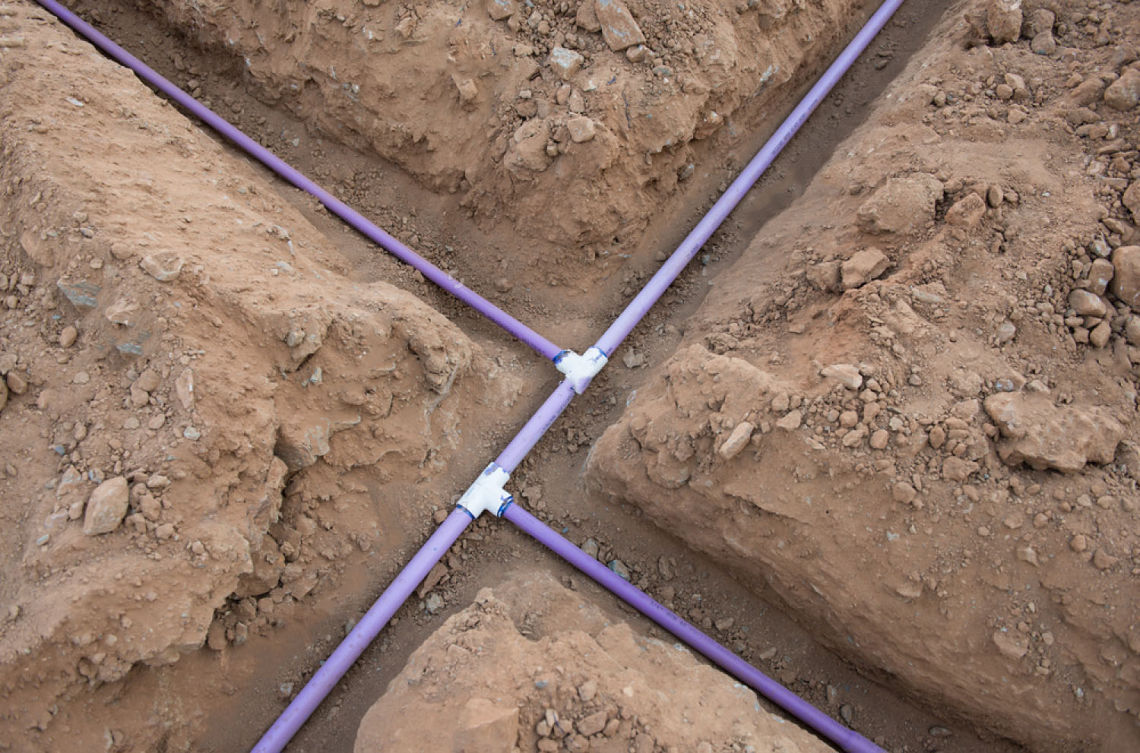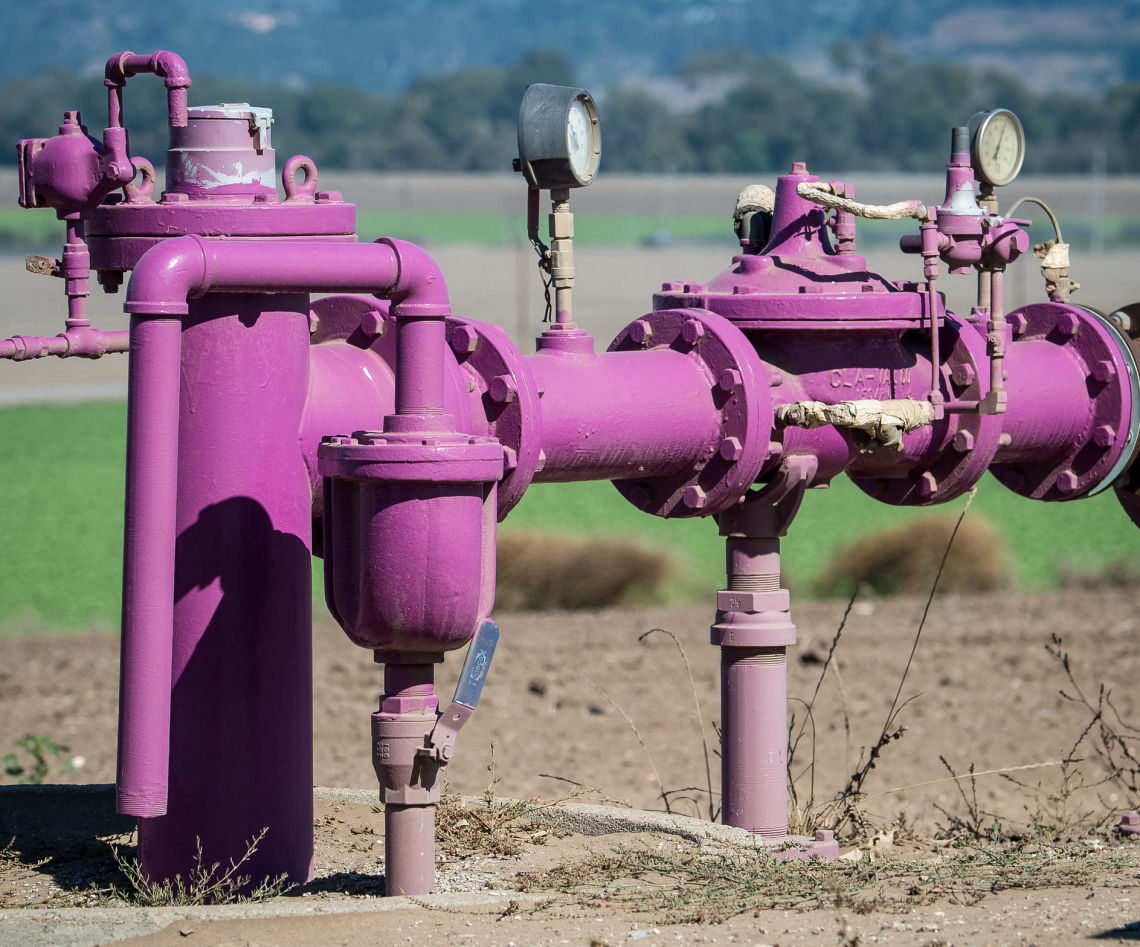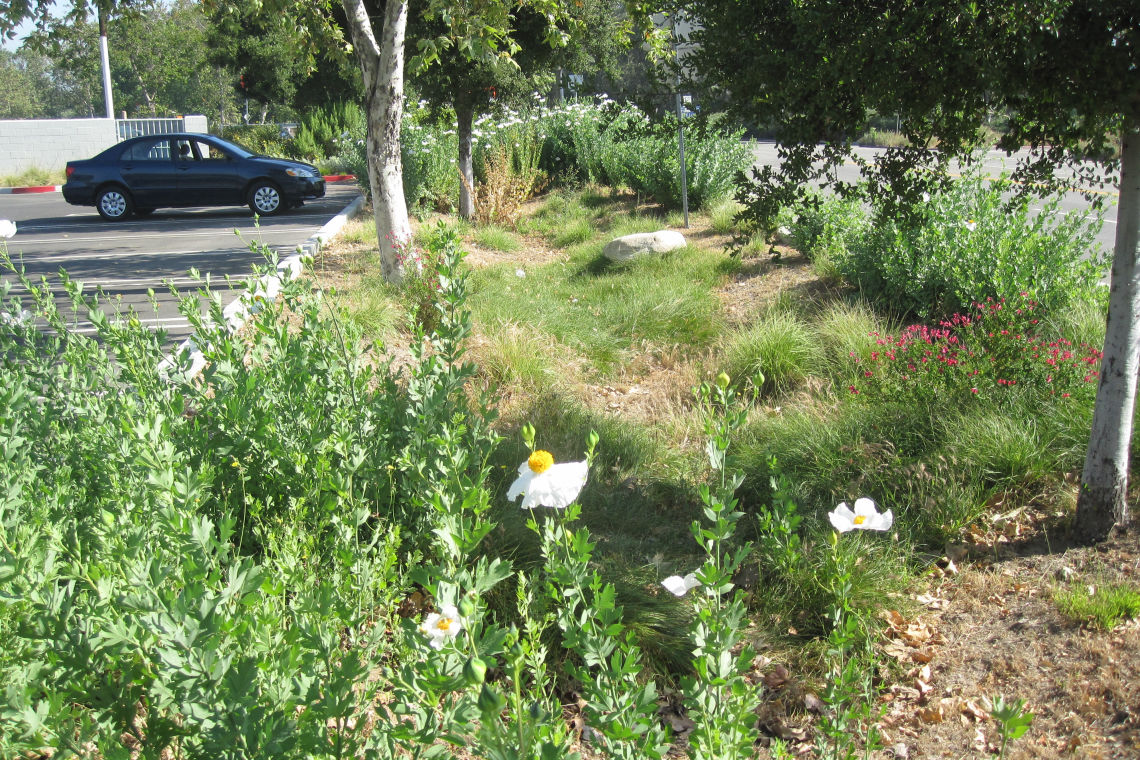Water Capture, Diversion, and Recycling
Conserving a Vital Resource
strategies photobutton watercapture

raingarden2 beautifulswales
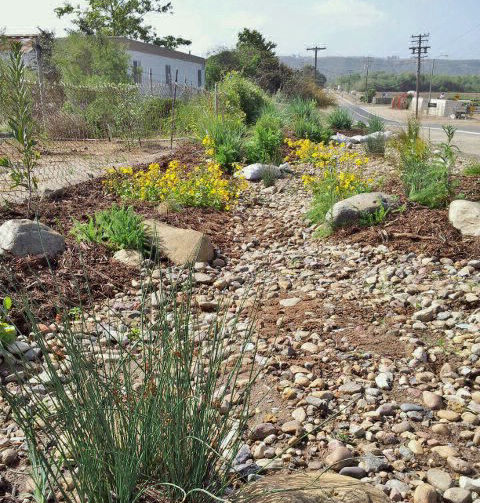
raingarden bioswale
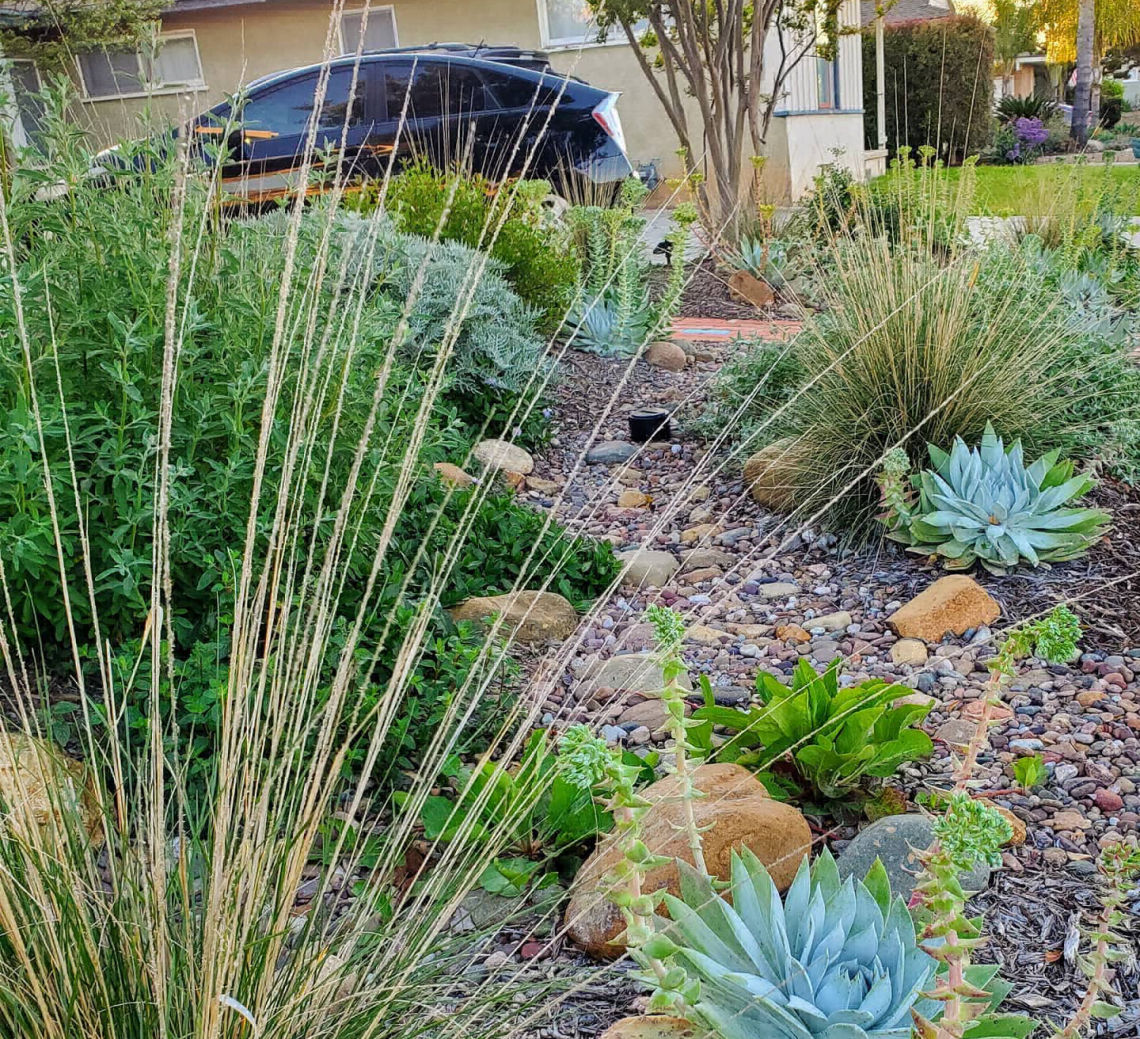
raingarden beautifulswales
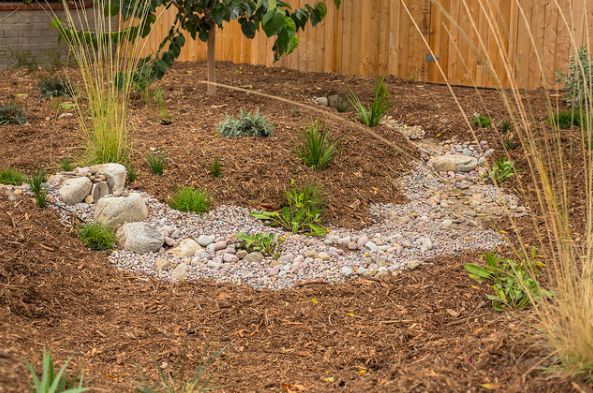
bioswale la zoo kcrw during rain 110515 e1450070337131
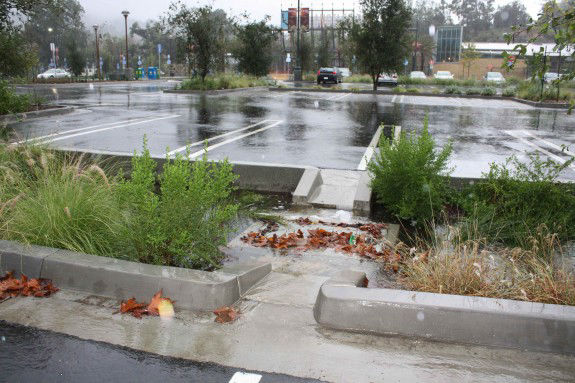
bioswale lazoo by ciara gonzalez for la creekfreak
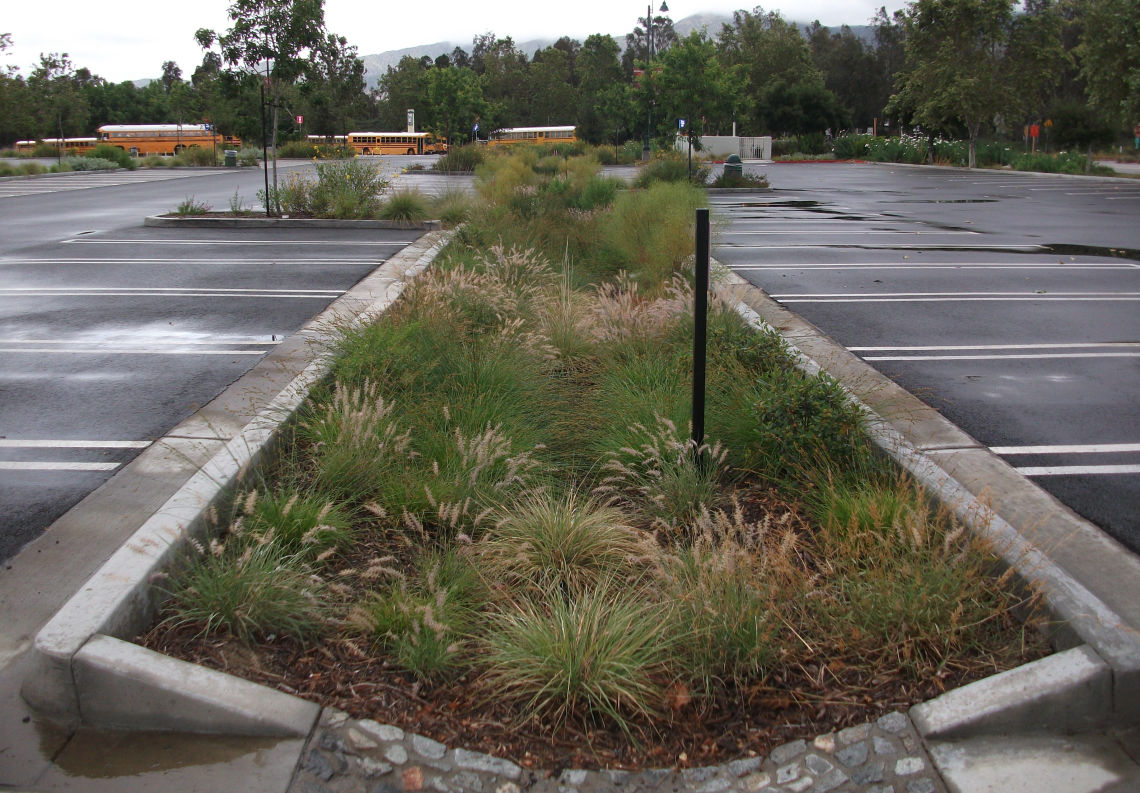
duarte bioswale bluegreen
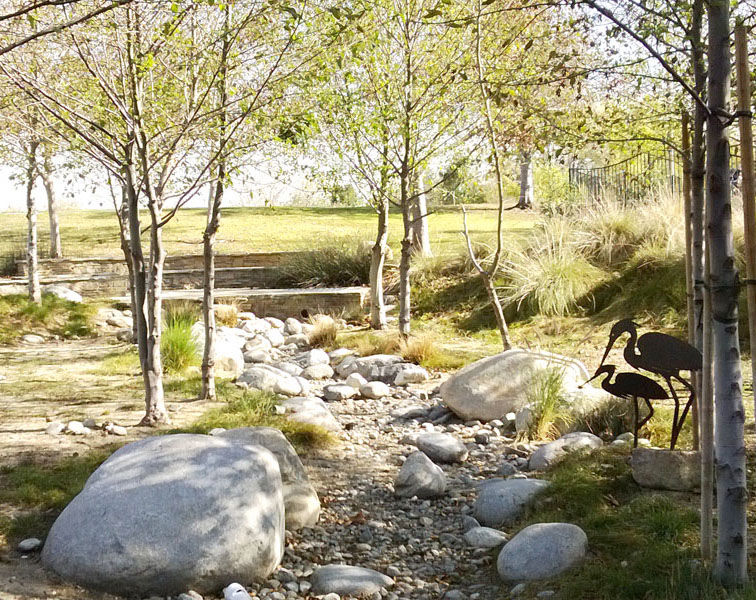
rain garden 1 kcrw
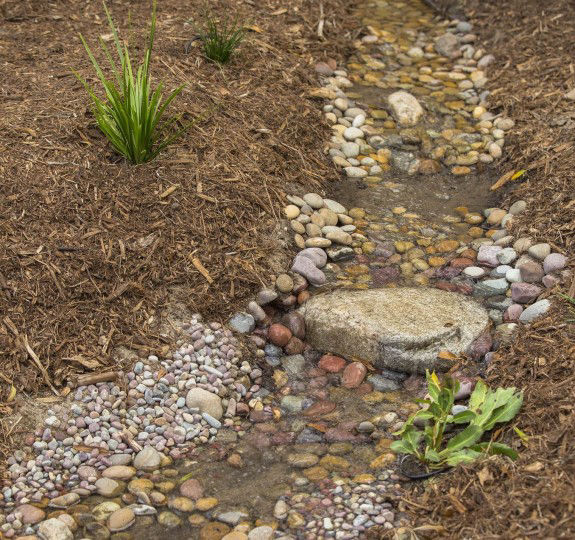
pacoima wash bioswale mrca
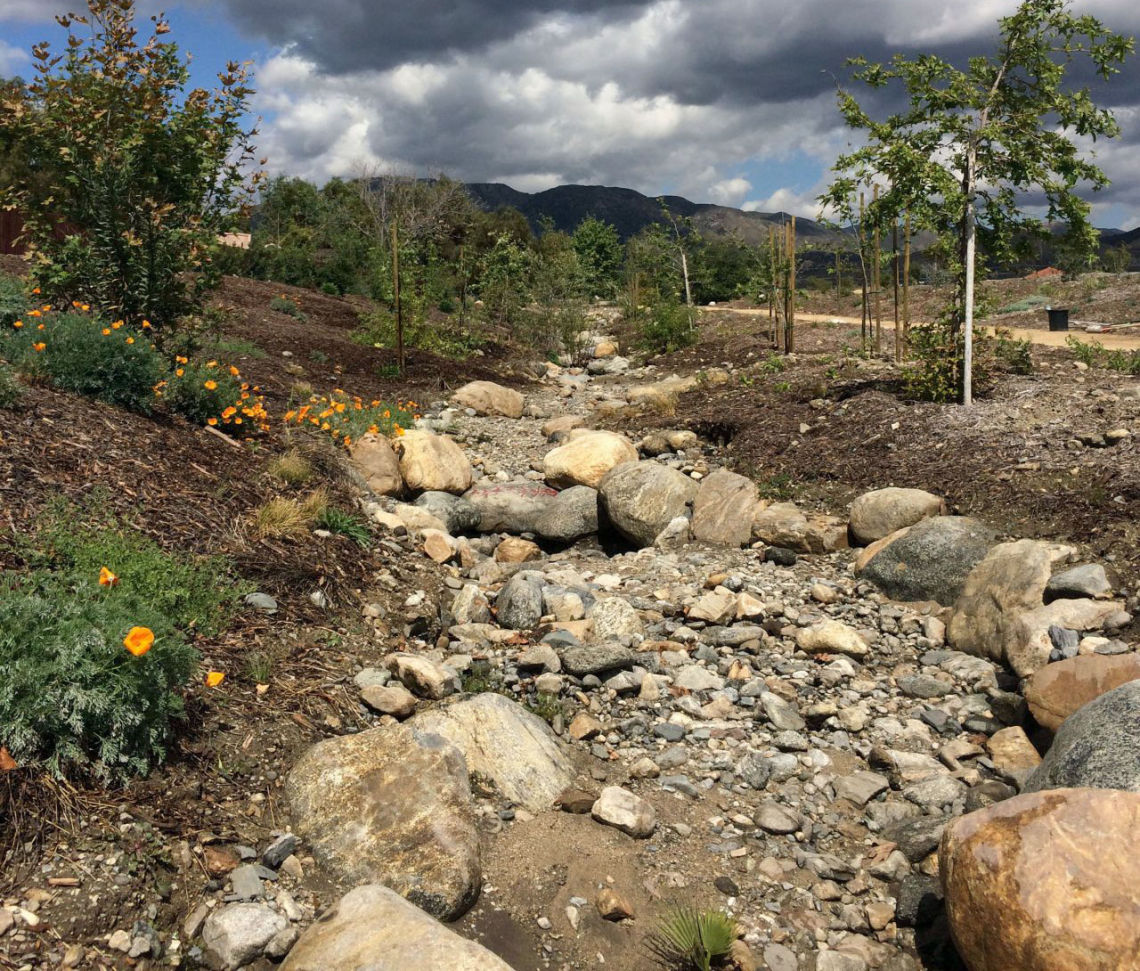
jeffseymourfamilycenter
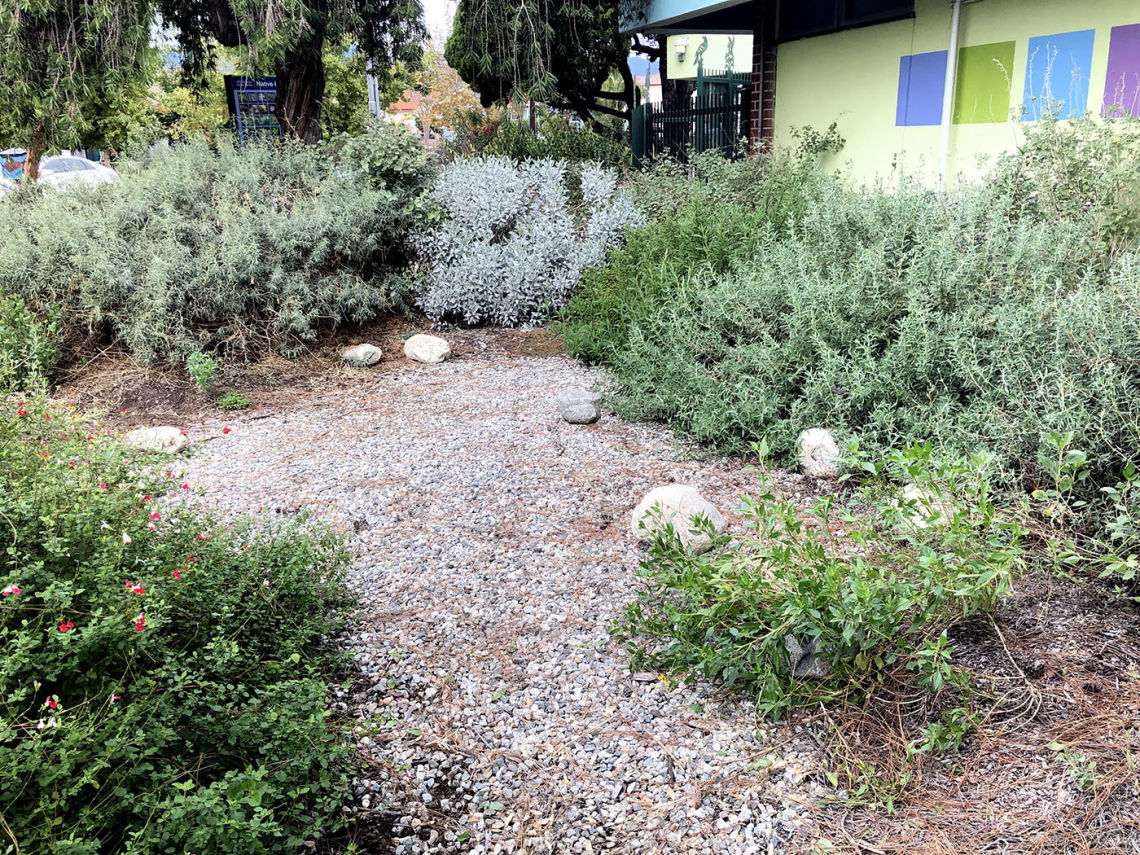
bioswale urbanwatergroup
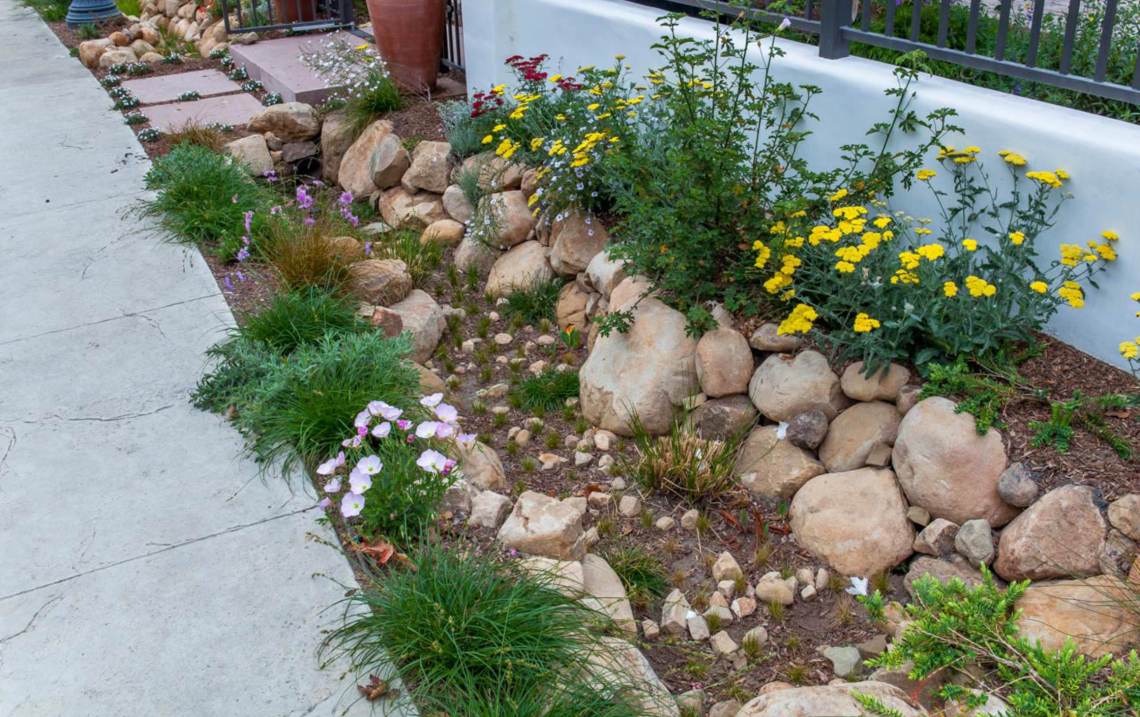
Bioswales & Rain Gardens
Bioswales are shallow depressions in the landscape that are gently sloped to collect and direct stormwater. Bioswales remove pollutants as the water filters through plants, soils and stream gravels, allowing the cleaned water to infiltrate into the soil. Also known as vegetated swales, bioswales and can be straight or meandering, simple, or ornate. A bioswale can be planted with grasses, or naturalized to look and function like a stream with river gravels, boulders and native plants that tolerate inundation.
A Rain Garden is a shallow depression in the earth that collects rainwater from a roof, driveway or other urban surface. Planted with drought tolerant and native plants, it reduces stormwater runoff, filters pollutants, and conserves water.
Rain gardens and bioswales can add beauty and even native habitat to any landscape, and can be incorporated into any landscape where water would otherwise run into the open storm drains—from residential yards to commercial parking lots and streetscape improvements. Locating these basins adjacent to roadways and parking areas is an effective way to capture and treat pollutants.
Permeable Surfaces
Many beautiful and innovative strategies exist for infiltrating water through parking lots and driveways. Different paving systems provide different multi-use opportunities, allowing parking areas to double as patio space, park land, and habitat. Parking lots and driveways can improve rather than degrade our public space with thoughtful, community-minded ecological design.
Permeable surfaces can include interlocking pavers, decomposed granite, pervious concrete and asphalt, grid systems, and other hard surfaces that allow water to infiltrate.
Rain Barrels, Cisterns,
& Drywells
Rain Barrels (typically 55-90 gallons) are often placed under downspouts to collect rain from roofs for use in the landscape. Connecting two or more barrels will increase your storage capacity.
Cisterns are larger storage units (more than 200 gallons) which can be located above or below ground in residential, industrial, or municipal settings. Homeowners will likely need a permit (and professional help) to install a cistern.
A Dry Well typically consists of a buried drain pipe underneath a downspout that carries water to an underground holding container which then percolates the water into the soil. Drywells can increase the functionality and capacity of other stormwater capture systems.
Notched Curbs
When it rains, urban streets run like rivers, carrying precious water away to the ocean. Notched Curbs or 'Curb Cuts' help us harvest that water in place by allowing runoff to percolate into street-side bioswales and rain gardens. These simple solutions not only bring beauty to our streets, they also keep our rivers and beaches clean while cooling our neighborhoods through healthy tree canopy and vegetation.
Notched Curbs allow our streets to function as integrated parts of the watershed, restoring some of the functions of natural river floodplains: capturing, cleaning, and restoring groundwater supplies. They lay the foundation for multi-benefit gardens that support pollinators, people, or both.
Greywater
Greywater is lightly used water from bathroom sinks, showers, bathtubs, and laundry machines that is still clean enough to use for landscape irrigation. Altering household plumbing to direct this water into the landscape allows us to get more out of this precious resource, and to save on landscape irrigation costs.
California allows homeowners to reuse laundry water to irrigate landscapes without going through a permitting process. In a typical California home, laundry accounts for 20% of indoor water use. Greywater can be compatible with edible landscapes, and is perfect for watering fruit trees.
Purple Pipe Irrigation
Purple Pipe refers to 'recycled water', or 'reclaimed water'. It is sewage water that has been filtered for solids and cleaned of some impurities. Although currently not suitable for drinking, recycled water can be used in the landscape. In cities, it is typically used to irrigate landscapes like cemetaries, golf courses, or large parks.
In our arid climate, use of recycled water reduces the need for imported water. This means using less water from our rivers, streams, and groundwater basins.
greenscape title examples

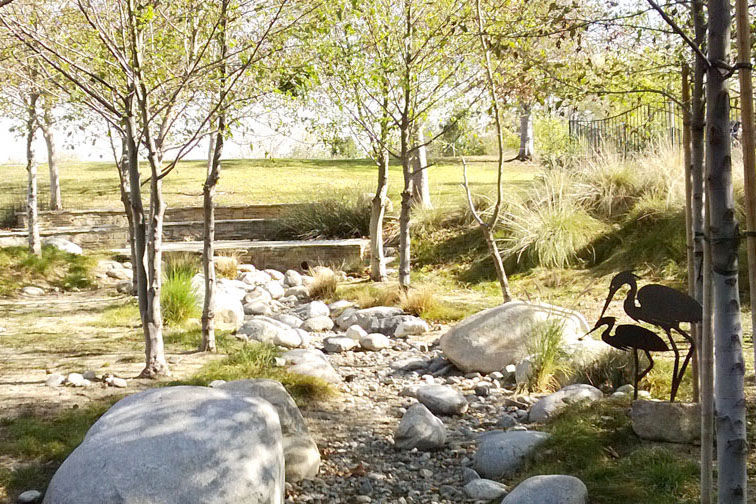
Encanto Park in Duarte includes a 1000-foot long bioswale and nature trail to capture water on site.

A former elemenatry school, the Jeff Seymour Family Center in El Monte is now a community wellness center and green infrastructure demonstration campus.
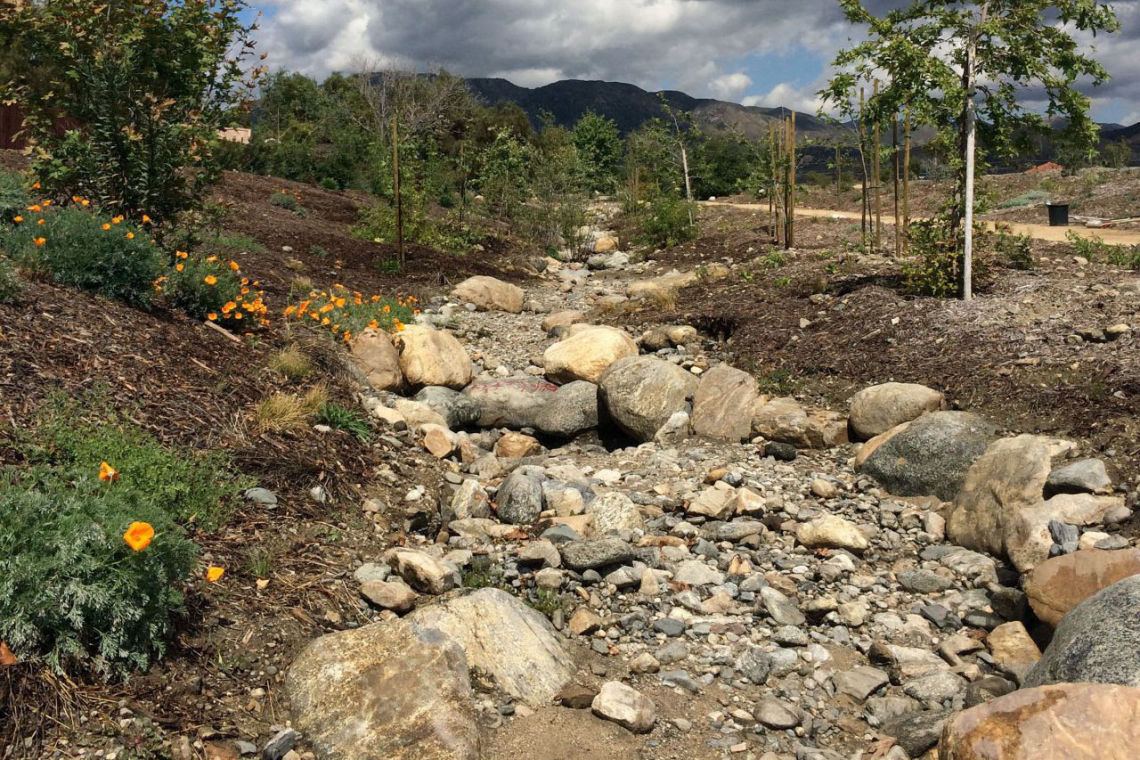
The Pacoima Wash Natural Park in the City of San Fernando diverts and cleans water running off of neighborhood streets.

The Water LA Program retrofits homes with numerous water capture strategies, including notched curbs, rain gardens, cisterns, and permeable driveways.

The Tujunga Wash Greenway in the Valley Glen Neighborhood of Los Angeles diverts up to 325,000 gallons of water per day from the flood control channel to be naturally infiltrated.
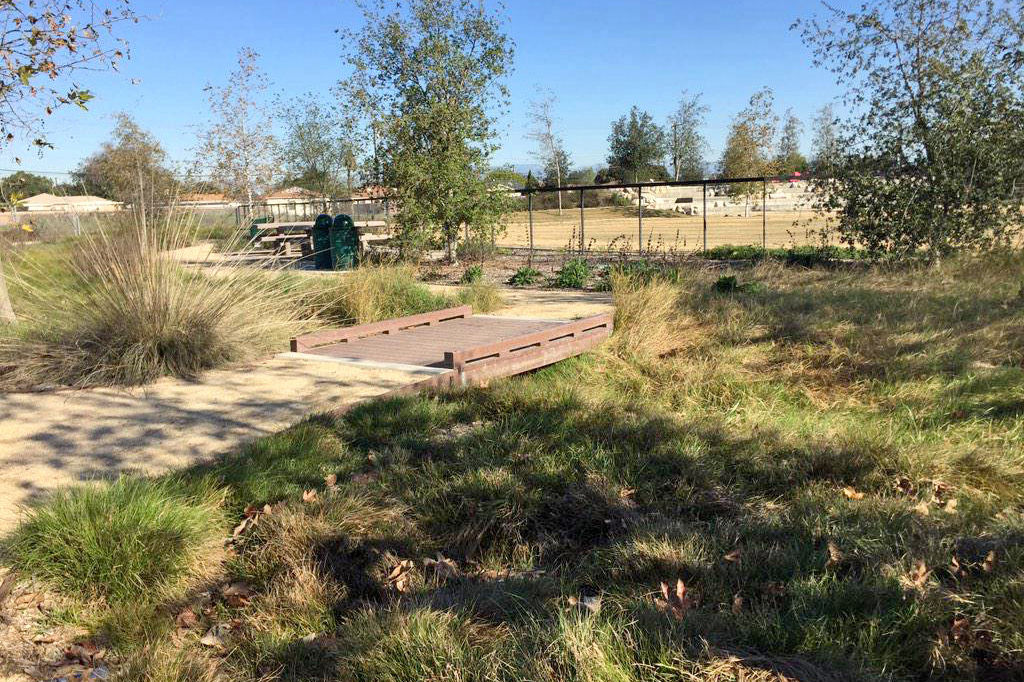
Compton Creek Natural Park includes a 127,000 gallon underground cistern which stores rainwater to irrigate the park.
Have a successful example you'd like featured in this vision plan? Fill out this form and let us know!
greenscape title resources

Bioswales
• Low Impact Development Standards Manual. County of Los Angeles Department of Public Works, February 2014.
• Low Impact Development Manual for Southern California. Low Impact Development Center, Inc.
• Caltrans Storm Water Quality Handbook, Biofiltration Swale Design Guidance. California Department of Transportation, June 2011.
• Case Study: The Design of a Bioretention Area to Treat Highway Runoff and Control Sediment. California State University Sacramento, Office of Water Programs.
• Bioswales ...absorb and transport large runoff events. USDA. Natural Resources Conservation Service.
• Urban Runoff: Low Impact Development. United States Environmental Protection Agency
Rain Gardens
—Demonstration Videos
• Swale & Rain Garden—How To . California Water Boards.
• How To Build a Rain Garden. PBS. "This Old House"
• Making a Rain Garden. Santa Barbara Watershed Management Group.
• Rain Garden Installation & Lawn Removal. The Bay Foundation.
• What the Heck is Stormwater Runoff? California Water Boards.
—Classes
• Water Harvesting at Crescent Farm. The Los Angeles County Arboretum.
• Smart Gardening Workshops. Los Angeles County Department of Public Works.
• California Friendly® Landscape Training and Turf Removal Classes. The Metropolitan Water District.
• Long Beach Water Lawn-to-Garden Classes. City of Long Beach.
—Guides
• California Watershed Approach to Landscape Design. The Green Gardens Group.
• A Homeowner’s ‘How-To’ Guide. City of Los Angeles’s Rain Water Harvesting Program
• Coastal California Rain Gardens. University of California Agriculture and Natural Resources.
• Building Multibenefit Recharge Basins. Sustainable Conservation, et al.
—Other Resources
• The Water LA Report (2018). Water LA / The River Project.
• Ocean Friendly Gardens. The Surfrider Foundation.
• Lawns and Water Demand in California. California Economic Policy. July 2006.
• How to Save Water and Beautify your Landscape ... the Sustainable Way (video seminar). UC Cooperative Extension.
• The non-profit Council for Watershed Health assists municipal and community groups with questions about low-impact development strategies, such as rain gardens.
Permeable Surfaces
• The Water LA Report (2018). Water LA / The River Project.
• Permeable Interlocking Concrete Pavement. U.S. Dept of Transportation Federal Highway Administration (2015). Techbrief FHWA-HIF-15-007.
• Porous Asphalt Pavement with Stone Resevoirs. U.S. Dept of Transportation Federal Highway Administration (2015).
• Stabilized DG Pavement. City of Carlsbad (2017). Appendix A.
• Best Management Practices Fact Sheet, Porous Asphalt. Dauphin County Conservation District.
• New Hampshire Homeowner’s Guide to Stormwater Management. Soak Up The Rain New Hampshire, pp 29 (2016).
• Permeable Pavement BMP’s, “Chapter 6: Stormwater Runoff BMP Options”. City of Santa Barbara (2013).
—Paving Material*
*Reference to specific paving suppliers informational material is not an endorsement from the WCA.
• NDS Permeable Paver Brochure.
• Core Landscape Products, FAQ.
Rain Barrels, Cisterns, & Drywells
—Demonstration Videos
• How To Install a Rain Tank. TreePeople.
• How to Install a Rain Barrel. Houzz.
• Capturing Rain Water One Rain Barrel at a Time. KCET. SoCalConnected.
—Guides
• Installing a Rain Barrel. TreePeople.
• Installing a Cistern. TreePeople.
• Drywells. Fairbanks Green Infrastructure Group.
• Rainwater Tanks. Water Sensitive Urban Design Technical Manual. Government of South Australia.
—Other Resources
• The Water LA Report (2018). Water LA / The River Project.
• Guidelines for Alternative Water Sources: Indoor and Outdoor Non-Potable Uses. Los Angeles County Department of Public Health.
• Rain Barrels International, Inc. Resources and online classes.
• Rainwater Harvesting for Drylands and Beyond. Brad Lancaster.
• American Rainwater Catchment Systems Association. Non-profit.
Notched Curbs (Curb Cuts)
• The Water LA Report (2018). Water LA / The River Project.
• Planting the Rain to Grow Abundance (video lecture). Brad Lancaster. TedxTalks.
• Curb Cut Rain Garden Handbook. The Sand Creek Subwatershed, Minnesota.
• Do-It-Yourself Curb Cut Guide. Brad Lancaster.
• Apply for a Curb Cut Permit in Los Angeles County. LA County Department of Public Works.
Greywater
• The Water LA Report (2018). Water LA / The River Project.
• Greywater Action. Greywater Education.
• Greywater Corps. Installation and Education.
• Greywater Handbook. Santa Barbara County.
• Greywater Design Manual. City and County of San Francisco.
• Laundry to Landscape (L2L) Greywater System instructional video. Oasis Design.
• DIY Greywater Installation Webinar series. Greywater Action.
• 2016 California Plumbing Code Allows installing L2L Greywater without a permit, if all conditions met.
Made with ❤️ by TreeStack.io
